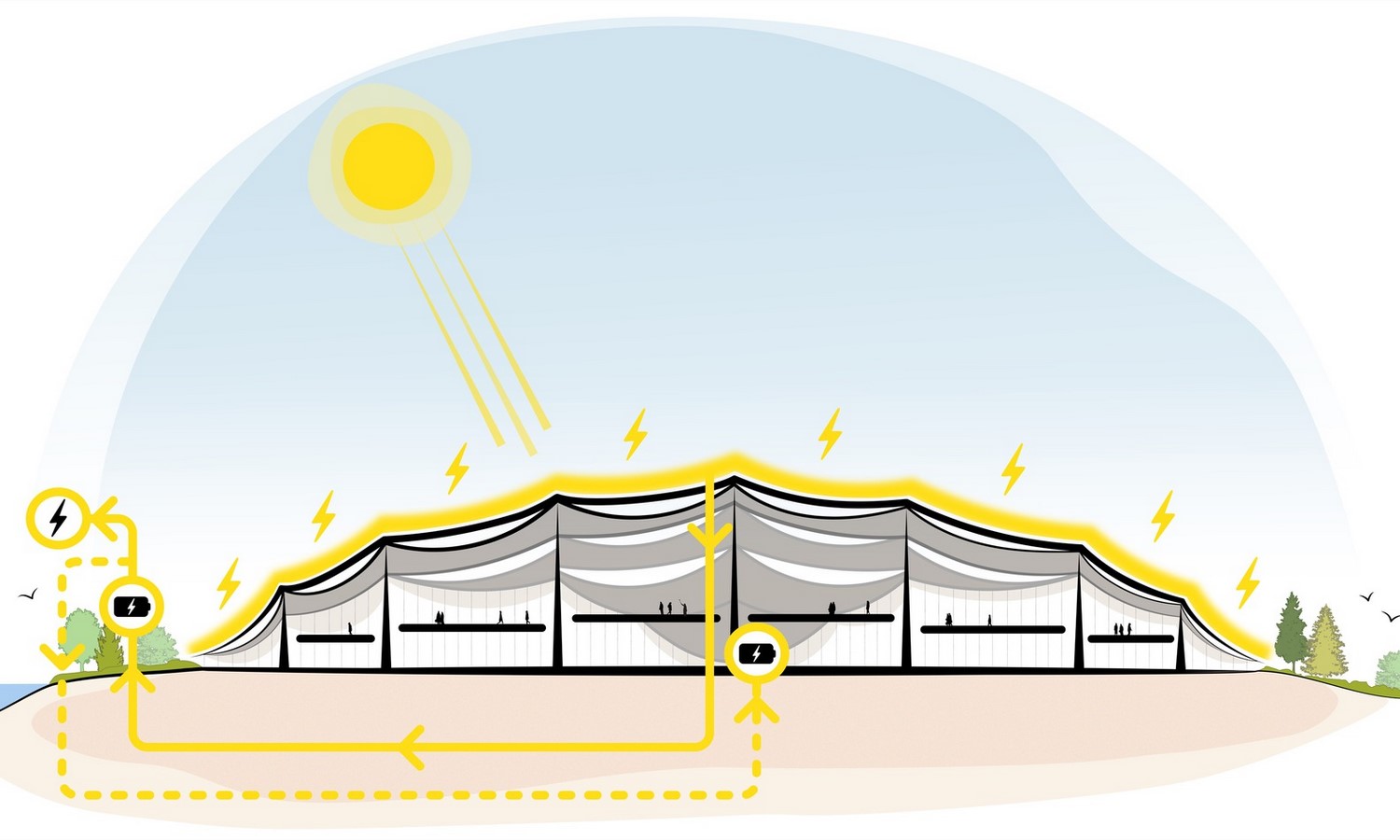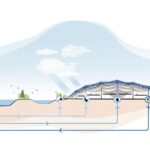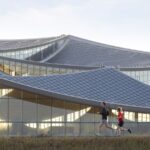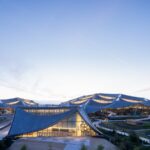Designed by BIG-Bjarke Ingels Group and Heatherwick Studios, the Google Bay View Campus represents a pioneering initiative in sustainable architecture and workplace design. With a focus on carbon neutrality and environmental stewardship, the campus aims to redefine the future of corporate campuses and construction practices.
Vision for Sustainability
Google’s ambitious goal for the Bay View Campus is to operate entirely on carbon-free energy by 2030. To achieve this, the campus incorporates innovative design features and sustainable technologies. From energy-efficient buildings to renewable energy generation and water conservation measures, every aspect of the campus is geared towards minimizing its environmental impact.

Architectural Design
The campus comprises three buildings spread across a 42-acre site in Silicon Valley. Designed as lightweight canopy structures, these buildings prioritize interior daylight, views, and collaboration. The open floor plan fosters flexibility and connectivity, with team spaces on the upper level and amenity spaces below. Indoor courtyards provide easy access to communal areas and encourage movement between different work modes.
Sustainable Features
At the heart of the campus is a large-span canopy roof equipped with solar panels, generating nearly seven megawatts of energy. This innovative roofing system maximizes solar energy capture while minimizing thermal heat gain and glare. Additionally, the campus features a geothermal pile system, stormwater management systems, and habitat restoration initiatives, further reducing its environmental footprint.

Regenerative Design
Google Bay View is committed to achieving certification under the Living Building Challenge (LBC), one of the most rigorous sustainability standards globally. By implementing scalable solutions such as modular construction, geothermal technology, and waste diversion strategies, the campus sets a new benchmark for regenerative design and ecological stewardship.
Industry Impact
Through its innovative approach and scalable solutions, the Bay View Campus aims to influence the broader construction industry. By demonstrating the feasibility and benefits of sustainable design practices, Google seeks to inspire other companies to adopt similar initiatives. Ultimately, the campus serves as a model for the future of workplace design and environmental sustainability.

Conclusion
The Google Bay View Campus represents a bold step towards a more sustainable and environmentally conscious future. By integrating cutting-edge technology, forward-thinking design, and a commitment to carbon neutrality, Google is leading the way in redefining the relationship between corporate campuses and the natural environment. As a beacon of innovation and sustainability, the Bay View Campus sets a new standard for sustainable architecture and workplace development.











